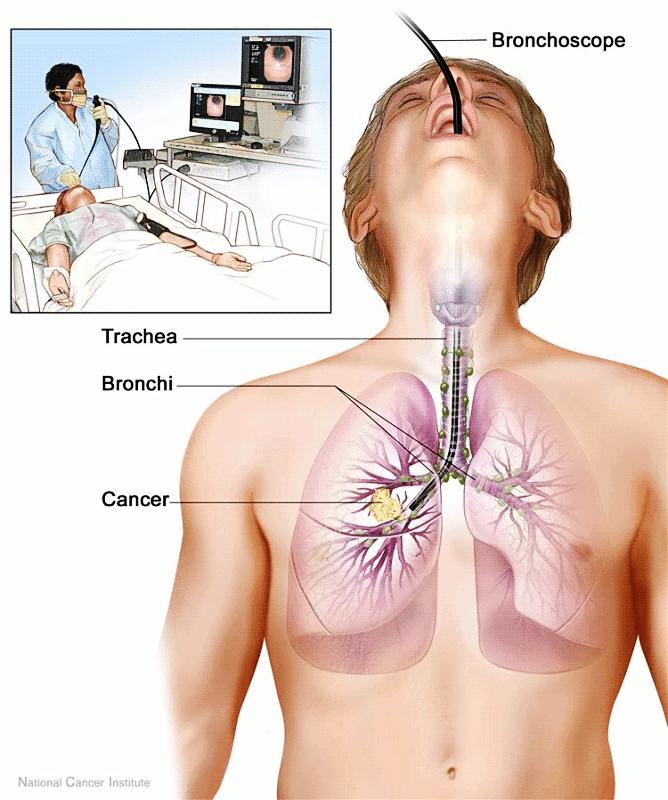Bronchoscopy is an endoscopic procedure that visualizes the airways in the lungs. The optical instrument, the bronchoscope, is inserted through the nose or mouth. Then, it is moved into the airways to capture a video for diagnostic or therapeutic purposes.
Types of Bronchoscopy
Rigid Bronchoscopy: A procedure in which a large straight metal tube is used to access the proximal airways. It requires general anesthesia and is most often used for interventional procedures. Rigid bronchoscopy is commonly utilized for tumor debulking, airway dilation, foreign body removal, placement and removal of airway stents, or to control massive hemoptysis.
Flexible Bronchoscopy: A procedure in which a small, flexible optical instrument is used to access smaller airways. The flexible bronchoscope has the ability to flex or extend its distal end, allowing the insertion through curved airways. It is typically performed under conscious sedation and is more commonly used that rigid bronchoscopy. Flexible bronchoscopy is commonly utilized for visualizing and sampling lesions, balloon airway dilation, airway stent placement, and other interventional procedures.
